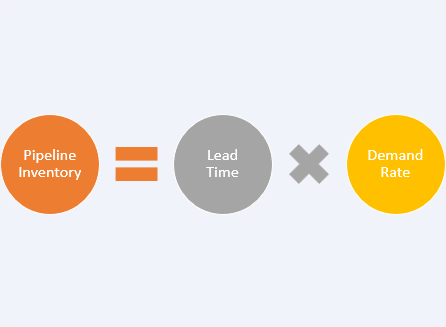

- #Pipeline inventory definition how to
- #Pipeline inventory definition full
- #Pipeline inventory definition Offline
And you’ll need to take a systematic approach to them in order to best equip your business for long term growth. These are the basic ingredients of quality inventory management. So you can automate as much of the inventory management process as possible. So you can properly record your inventory on financial documents. So you have visibility on where exactly your inventory is as well as additions (purchases) and subtractions (sales & shrinkage), to give as close to a live stock figure as possible. So you can quickly and efficiently book-in, put away, pick, pack and ship inventory as and when needed at your various locations. So you can use metrics to make more informed decisions about your inventory as time goes on.

So you know how much of each inventory item can be suitably housed, and where to send it.
#Pipeline inventory definition how to
So you know when and how to create purchase orders to re-order new stock. So you know how much stock is needed to satisfy demand over an upcoming time period.
#Pipeline inventory definition full
So you know what type of inventory is where and can have full visibility over it. In reality, good inventory management all comes down to understanding: You want to keep inventory levels balanced at all times without ever having too much or too little of each product in stock. But what’s actually involved when it comes to making good inventory management happen? We’ve covered the broad definition of inventory management. This involves selling inventory (usually in bulk) directly business-to-business (B2B) or taking part in B2B ecommerce.Ī company’s inventory will therefore need to be managed in accordance with which of these retail models it operates within.
#Pipeline inventory definition Offline
Where a company provides a unified, integrated experience for customers across all the different online and offline channels it sells on.īusinesses may also choose to trade via wholesale channels. Where a company sells in multiple different places, usually a combination of online websites and marketplaces. Where a company sells over the internet via an ecommerce website or marketplace. Where a company sells via a brick-and-mortar store or physical location. We’ll therefore be focusing mainly on inventory management from a retail perspective within this guide. While not exclusive to retail, inventory management tends to play more of a role in this industry than any other. Retail is the general term used to describe businesses that sell physical products to consumers. And this guide will help you achieve just that. Inventory management is the process of ordering, handling, storing, and using a company’s non-capitalised assets – AKA its inventory.įor some businesses, this involves raw materials and components, while others may only deal with finished stock items ready for sale.Įither way, inventory management all comes down to balance – having the right amount of stock, in the right place, at the right time.


 0 kommentar(er)
0 kommentar(er)
